If you have ever noticed brown spots on the leaves of your Calathea plant, you may be wondering what causes them and how to treat them. Brown spots on Calathea leaves can be caused by a variety of factors, including too much sun, too much water, or even a lack of humidity. Luckily, there are a few simple treatments that can help get rid of brown spots on Calathea leaves.
Causes of Brown Spots on Calathea Leaves
If you notice brown spots on the leaves of your Calathea plant, don’t panic! In most cases, these brown spots are harmless and can be caused by a number of factors, including environmental stress, water stress, or even too much fertilizer.
If your plant is located in a spot that gets too much direct sunlight, the leaves can scorch and turn brown. One of the most common causes of brown spots on Calathea leaves is environmental stress. Similarly, if the air around your plant is too dry, the leaves can also become brown and crispy.
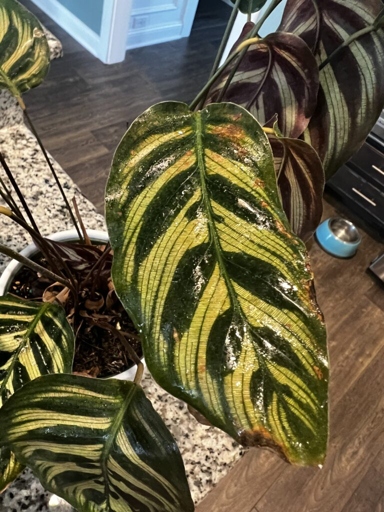
If your plant is not getting enough water, the leaves will start to turn brown and wilt. Make sure you are watering your plant regularly and keeping the soil moist but not soggy. Water stress is another common cause of brown spots on Calathea leaves.
Finally, brown spots on Calathea leaves can also be caused by too much fertilizer. If you’ve been fertilizing your plant more than necessary, the excess nutrients can build up in the leaves and cause brown spots. Cut back on fertilizer and water your plant more frequently to flush out the excess nutrients.
Algal Leaf Spot
If you notice brown spots on the leaves of your Calathea plant, it is likely due to algal leaf spot. This is a common problem that can be caused by several different fungi, including Alternaria, Cercospora, and Phyllosticta. If the spots are small and few in number, you can try to remove them with a soft cloth or cotton swab. Algal leaf spot is most likely to occur in humid or wet conditions, so be sure to keep your plant in a well-ventilated area and water only when the soil is dry. However, if the spots are large or numerous, it is best to remove the affected leaves and destroy them.
Fungal Diseases
Fungal diseases are a common problem for Calathea plants. If the spots are large and irregular, they are probably caused by a fungus called Cladosporium. Brown spots on the leaves are usually the first sign of a problem. If the spots are small and round, they are probably caused by a fungus called Alternaria. The spots may be small and round, or they may be large and irregular.
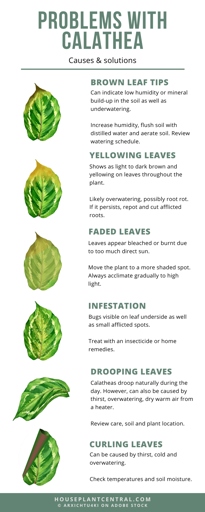
This will help to keep the leaves dry, which will make it harder for the fungi to grow. Finally, if you see any spots on the leaves, remove them immediately. Fungi love dark, damp conditions, so increasing the amount of light your plant gets will help to discourage them. Second, water your plant from the bottom rather than from the top. Fungal diseases can be difficult to treat, but there are a few things you can do to try to control them. First, make sure your plant is getting enough light. This will help to prevent the disease from spreading.
Anthracnose
This disease is most commonly caused by wet conditions and can be difficult to control. If you notice brown spots on the leaves of your Calathea plant, it is likely due to a fungal disease called anthracnose. Treatment options include removing affected leaves, increasing air circulation, and applying a fungicide.
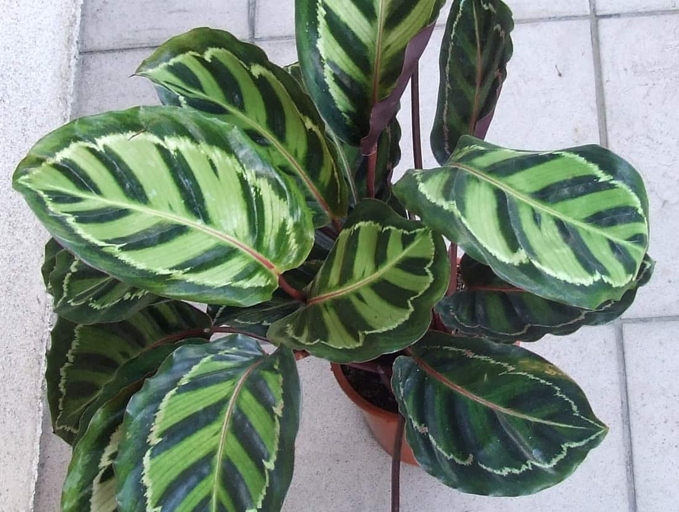
Anthracnose is most commonly caused by wet conditions, such as excessive watering or high humidity. The disease is characterized by brown or black spots on the leaves, which can eventually lead to leaf death. Anthracnose is a type of fungal disease that can affect a variety of plants, including Calathea.
Finally, a fungicide can be applied to the leaves to help control the disease. This will help to prevent the spread of the disease. To treat anthracnose, it is important to remove any affected leaves from the plant. Additionally, increasing air circulation around the plant will help to reduce the chances of the fungus developing.
Septoria Leaf Spot
The fungus thrives in warm, humid conditions and can be spread by water droplets. The spots are caused by a fungus called Septoria lycopersici. If you do get septoria leaf spot, you can treat it with a fungicide. Septoria leaf spot is a common problem with Calathea plants. The best way to prevent septoria leaf spot is to water your Calathea plant from the bottom up and to keep the leaves dry. The leaves of the plant will develop brown spots that can eventually lead to the death of the leaf.
Powdery Mildew
The disease is characterized by brown spots on the leaves of the plant. Powdery mildew is a type of fungal disease that can affect Calathea plants. The disease can be treated by increasing the air circulation around the plant and by applying a fungicide to the affected areas. Powdery mildew is caused by a lack of air circulation around the plant.
Bacterial Leaf Spot of Calathea
The most common symptom is brown or black spots on the leaves, which can eventually lead to leaf loss. If you do get bacterial leaf spot, you can treat it with a copper-based fungicide. The best way to prevent this problem is to water your Calathea from the bottom, using a pebble tray or self-watering pot. Bacterial leaf spot of Calathea is a common problem that can be caused by several different bacteria.
Nutrient Deficiency
The most common nutrient deficiencies that cause brown spots are nitrogen, magnesium, and iron. Calathea leaves are susceptible to brown spots due to nutrient deficiency.
Nitrogen is an essential nutrient for plant growth and is used by plants to produce chlorophyll, the green pigment that gives plants their color. Nitrogen deficiency is the most common cause of brown spots on Calathea leaves. When nitrogen is deficient, chlorophyll production decreases, causing the leaves to turn yellow or brown.
When magnesium is deficient, chlorophyll production decreases, causing the leaves to turn yellow or brown. Magnesium is an essential nutrient for plant growth and is used by plants to produce chlorophyll. Magnesium deficiency is another common cause of brown spots on Calathea leaves.
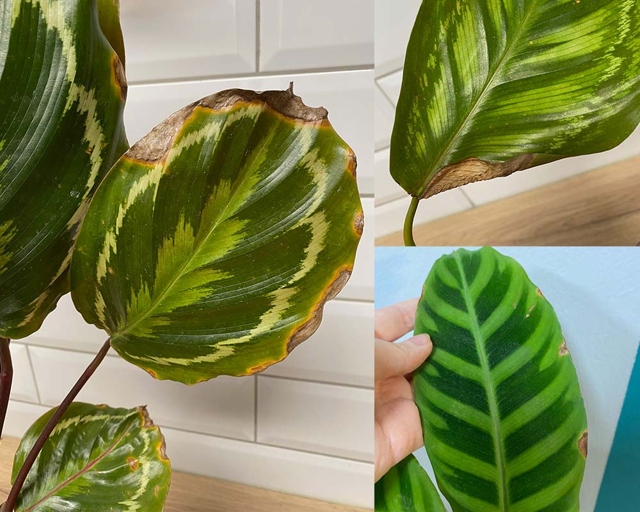
When iron is deficient, chlorophyll production decreases, causing the leaves to turn yellow or brown. Iron deficiency is also a common cause of brown spots on Calathea leaves. Iron is an essential nutrient for plant growth and is used by plants to produce chlorophyll.
Edema
If you notice brown spots on your Calathea leaves, it is likely due to edema. Edema is a condition caused by too much water in the plant tissue. Edema will cause the leaves to turn brown and eventually drop off. This can be due to overwatering, or to water that is high in salts.
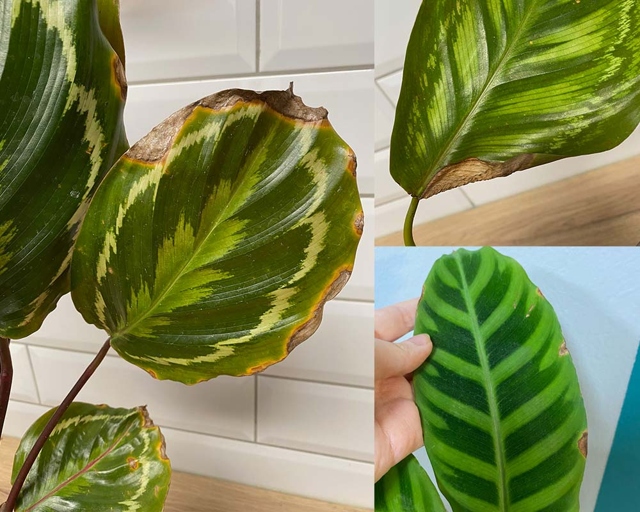
To treat edema, you will need to adjust your watering schedule. If the edema is severe, you may need to repot your plant in fresh, sterile potting mix. Water your Calathea only when the top inch of soil is dry. Be sure to use distilled or filtered water, as tap water can contain high levels of salts.
Excess Light or Leaf Scorching
Calathea leaves are known to scorch or develop brown spots when they are exposed to excess light. This can happen if the plant is placed in a spot that receives direct sunlight, or if the plant is not getting enough water and the leaves are drying out.
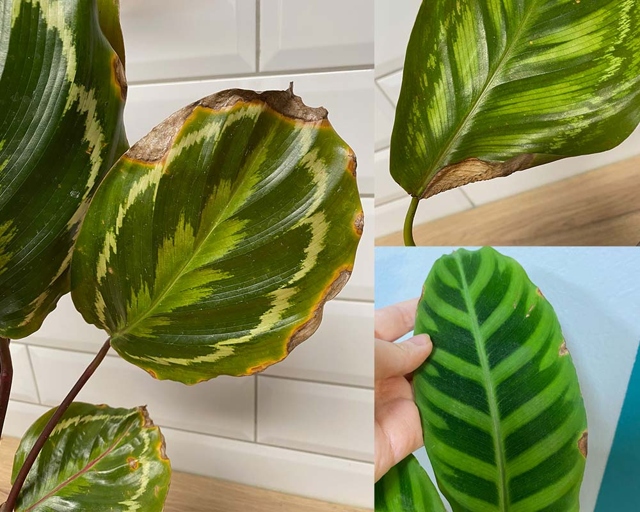
If the leaves do start to scorch or develop brown spots, you can try trimming them back to help the plant recover. To prevent this from happening, it is important to make sure that the plant is getting enough water and is not placed in an area that receives direct sunlight.
Frost Damage
If your plant is affected by frost damage, it is important to take action immediately to prevent further damage. The leaves of this tropical plant are very sensitive to cold temperatures and can be easily damaged by frost. Frost damage is one of the most common problems that can affect Calathea leaves. Symptoms of frost damage include brown spots on the leaves, wilting, and leaf drop.
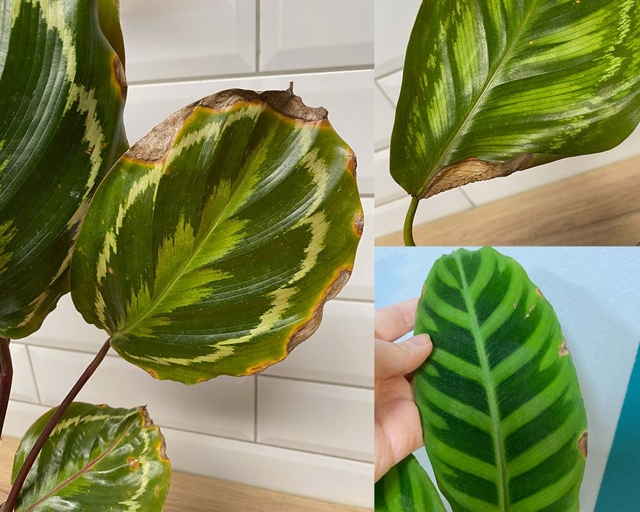
If the leaves are severely damaged, you may need to trim them back to promote new growth. There are a few things you can do to treat frost damage on Calathea leaves. First, move the plant to a warmer location if possible. If the temperature is not too cold, you can also try misting the leaves with warm water to help them recover.
Frost damage can be a serious problem for Calathea plants, but it is possible to recover from it with quick action and proper care.
Low Humidity
If the air in your home is too dry, the leaves will begin to brown and curl. Calathea plants are native to tropical regions and require high humidity to thrive. If you notice brown spots on your Calathea leaves, it is likely due to low humidity.
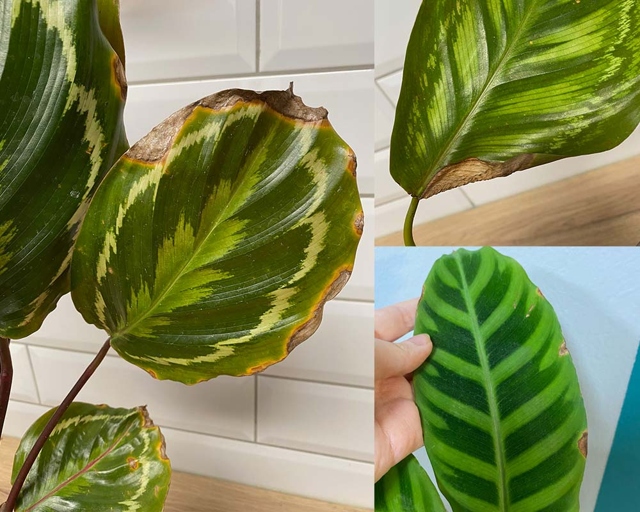
To increase the humidity around your Calathea, try placing the pot on a pebble tray or grouping it with other plants. With proper care, your Calathea should recover and begin to thrive. Be sure to keep an eye on the leaves and remove any that are browning or curling. You can also use a humidifier near the plant.
Insect Infestation
These pests are attracted to the plant’s moisture and can quickly cause damage. To get rid of the insects, you’ll need to treat the plant with an insecticide. Be sure to follow the instructions on the label carefully to avoid harming your plant. If you notice brown spots on your Calathea leaves, it is likely due to an insect infestation.
Watering Problems
If you continue to have problems with brown spots, try increasing the humidity around your plant by placing it on a pebble tray or using a humidifier. Allow the soil to dry out completely before watering again. If the leaves are brown and dry, it’s a sign of overwatering. If you notice brown spots on your Calathea leaves, it’s likely due to improper watering. Calathea are native to tropical regions and prefer high humidity and moist soil. Allow the top inch of soil to dry out before watering again.
Fertilizer Burn
It is caused by using too much fertilizer, which can cause the leaves to turn brown and crispy. The best way to avoid this problem is to use a light hand when applying fertilizer, and to make sure that the fertilizer is diluted properly. Fertilizer burn is one of the most common problems when it comes to taking care of Calathea plants. If you do notice brown spots on your Calathea leaves, you can try to remove them by gently rubbing the leaves with a damp cloth.
How to Treat Brown Spots on Calathea Leaves?
If you have brown spots on the leaves of your Calathea plant, don’t worry! There are a few things you can do to treat them.
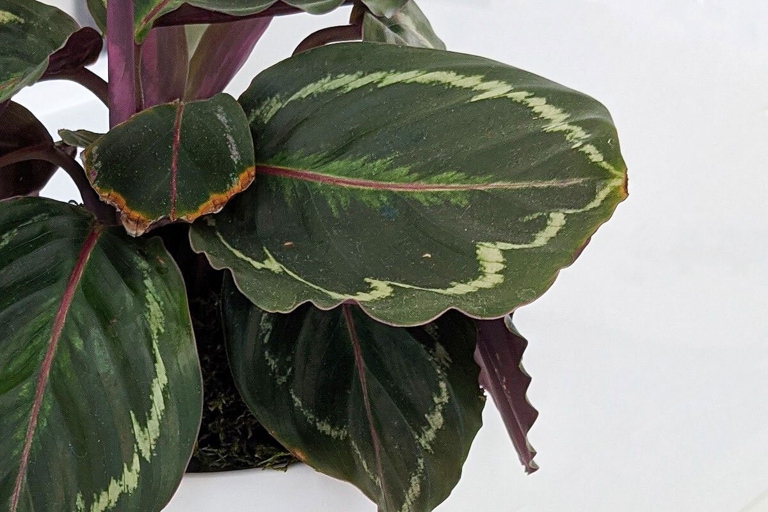
Make sure you’re watering your Calathea plant regularly and evenly. Brown spots can be caused by too much or too little water. First, check the plant’s watering schedule.
Next, take a look at the plant’s light exposure. Brown spots can also be caused by too much or too little light. If your plant is in a spot that gets too much direct sunlight, try moving it to a shadier spot.
If you see any pests on your plant, remove them immediately. Finally, check for pests. Brown spots can sometimes be caused by pests like aphids or mealybugs.
With a little bit of care, your Calathea plant will be healthy and green in no time!
For Brown Spots Caused by Diseases (Bacterial, Fungal, etc.)
Fungal diseases such as Botrytis cinerea and Colletotrichum gloeosporioides can also cause brown spots on leaves. Generally, treatment will involve applying a fungicide or bactericide to the affected leaves. Bacterial diseases such as Pseudomonas cichorii and Pseudomonas syringae pv. Treatment for these diseases will vary depending on the specific disease. There are many different diseases that can cause brown spots on Calathea leaves. actinidiae can cause brown spots on leaves.
For Brown Spots Caused by Nutrient Deficiency
There are a few possible causes of brown spots on Calathea leaves, but the most likely cause is a nutrient deficiency. Calathea are native to tropical regions and need high levels of humidity and moisture to thrive. If the leaves are allowed to dry out, they will start to turn brown.
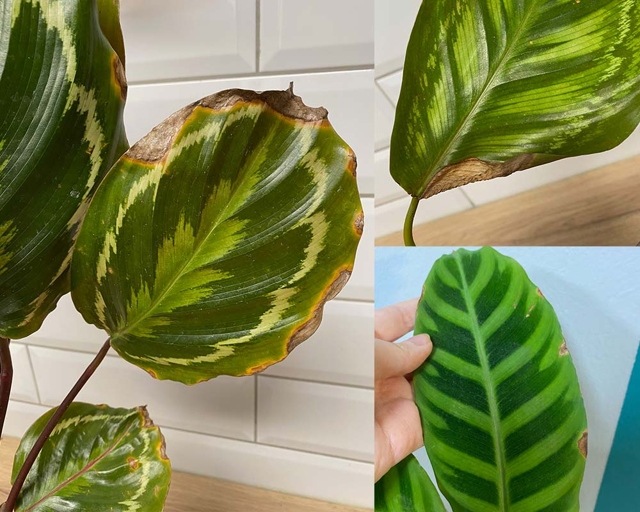
If the brown spots are severe, you may need to repot your plant in fresh potting mix. To prevent brown spots caused by nutrient deficiency, make sure to keep the leaves of your Calathea plant moist by misting them regularly or setting the pot on a tray of pebbles and water. You can also fertilize your plant with a balanced liquid fertilizer every two weeks during the growing season.
For Brown Spots Caused by Edema and Watering Problems
Edema is a condition in which the plant cells become filled with water, causing the leaves to swell and eventually burst. If the spots are still there after you have corrected the watering problem, then it is most likely due to a fungal infection or pests. If you think your plant has edema, try to correct the watering problem and see if the spots go away. This can be caused by overwatering, using too much fertilizer, or even by sitting the plant in a saucer of water. If you notice brown spots on your Calathea leaves, it is most likely due to edema or watering problems.
For Brown Spots Caused by Excess Light/Scorching
You can also try to increase the humidity around the plant by misting it with water or using a humidifier. If you notice brown spots on your Calathea leaves, it is likely due to excess light or scorching. If the brown spots are large or cover a significant portion of the leaf, you will need to move the plant to a location with less light. If the brown spots are small and isolated, you can try to increase the humidity around the plant by misting it with water or using a humidifier.
For Brown Spots Caused by Low Humidity
Calathea plants are native to tropical regions and require high humidity to thrive. If you live in an area with low humidity, there are a few things you can do to increase the humidity around your plant. If you notice brown spots appearing on your Calathea leaves, it is likely due to low humidity.
A pebble tray is a tray filled with pebbles and water. The water will evaporate and increase the humidity around the plant. One way to increase the humidity is to place your Calathea plant on a pebble tray.
Another way to increase the humidity is to mist the leaves of your Calathea plant with water. Misting the leaves will also help to keep the leaves clean and free of dust.
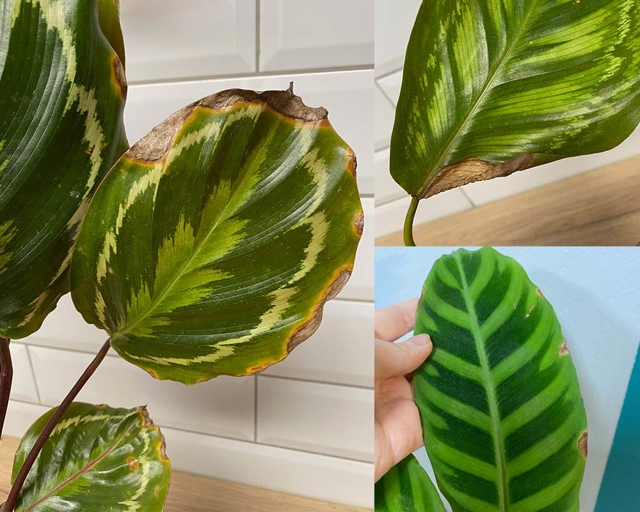
There are a few things you can do to increase the humidity around your plant, such as placing your Calathea plant on a pebble tray or misting the leaves with water. If you notice brown spots on your Calathea leaves, it is likely due to low humidity.
For Brown Spots Caused by Frost Damage
If the frost damage is severe, the leaves may turn brown and die. Brown spots on the leaves are usually the first sign of frost damage. The leaves of this tropical plant are very sensitive to cold temperatures and can be easily damaged by frost. Frost damage is one of the most common causes of brown spots on Calathea leaves.
The best way to protect your plant from frost damage is to move it indoors or into a greenhouse. If you cannot move your plant, you can try to protect it by covering it with a frost blanket or burlap sack. Calathea plants are native to tropical regions and cannot tolerate cold temperatures. If your Calathea plant is exposed to frost, it is important to take action immediately to prevent further damage.
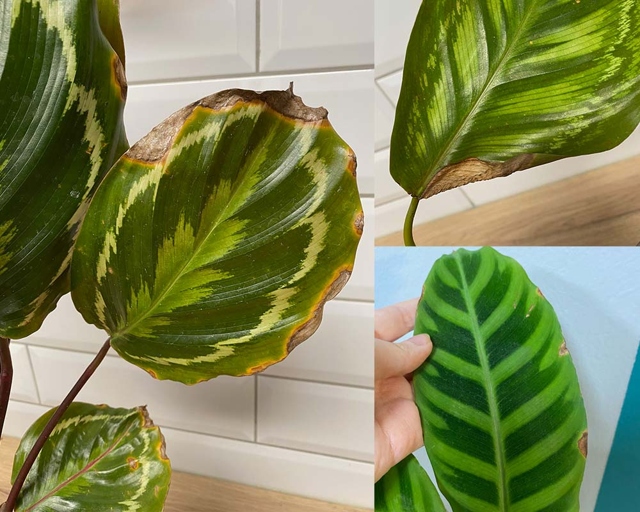
If the frost damage is severe, you may need to cut back the plant to encourage new growth. If your Calathea leaves have already been damaged by frost, you can try to remove the brown spots by gently rubbing them with a soft cloth. If the spots are very dark or large, you may need to trim the affected leaves.
For Brown Spots Caused by Fertilizer Burn
To prevent fertilizer burn, only fertilize your Calathea every other month and use a weak fertilizer. This can happen if you fertilize your plant too often or if you use a fertilizer that is too strong. If you notice brown spots on your Calathea leaves, it is likely due to fertilizer burn. Fertilizer burn will cause the leaves to turn brown and may eventually kill the plant. If you think your plant has fertilizer burn, you can try to save it by watering it deeply and moving it to a shady location.
For Brown Spots Caused by Insect Infestation
You may also want to consider repotting the plant to get rid of any insects that may be in the soil. If you have brown spots on your Calathea leaves, it is most likely due to an insect infestation. The best way to treat this is to remove the affected leaves and spray the plant with an insecticide.
How to Prevent Brown Spots on Calathea Leaves?
These brown spots are usually caused by too much sun, but can also be caused by too much water or fertilizer. If the brown spots are caused by too much water, let the soil dry out before watering again. If the brown spots are caused by too much fertilizer, flush the soil with water to remove the excess fertilizer. One of the most common problems with Calathea plants is brown spots on the leaves. If you see brown spots on your Calathea leaves, try moving the plant to a shadier spot.
Final Words
If you notice brown spots appearing on the leaves, it’s likely due to one of these factors. This means watering it regularly, keeping it in a humid environment, and making sure it gets enough light. As with any houseplant, it’s important to give your Calathea the proper care it needs to thrive.
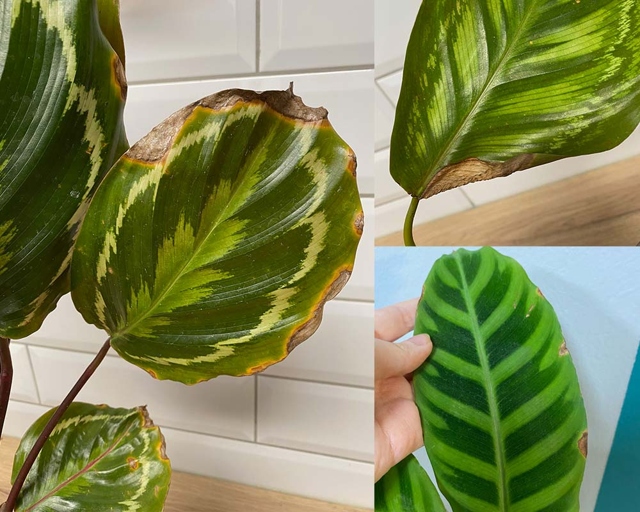
To prevent brown spots, water your Calathea regularly and keep it in a humid environment. If the spots are already present, try increasing the humidity around the plant or misting the leaves with water. If the spots are due to too much sun, move the plant to a shadier spot.
However, if the problem persists, it’s best to consult a professional. With proper care, your Calathea should be able to bounce back from brown spots.
Frequently Asked Questions
1. What are brown spots on Calathea leaves?
Brown spots on Calathea leaves are usually caused by too much direct sunlight or by overwatering.
2. How can I prevent brown spots on my Calathea leaves?
To prevent brown spots, make sure to give your plant indirect sunlight and to water it only when the soil is dry.
3. What is the best way to treat brown spots on Calathea leaves?
If you already have brown spots on your leaves, you can try to remove them by gently rubbing them with a damp cloth.
4. Will brown spots on Calathea leaves kill my plant?
No, brown spots on Calathea leaves will not kill your plant. However, they can cause the leaves to become discolored and damaged over time.
5. Is it possible to get rid of brown spots on Calathea leaves permanently?
Unfortunately, it is not possible to get rid of brown spots on Calathea leaves permanently. However, you can prevent them from coming back by following the tips in question 2.
Final thoughts
If you have brown spots on your Calathea leaves, it is most likely due to one of three reasons: too much sun, not enough humidity, or a chemical reaction. The best way to treat brown spots is to move your plant to a shadier spot and increase the humidity around it. You can also try using a diluted bleach solution or fungicide to treat the affected leaves.
